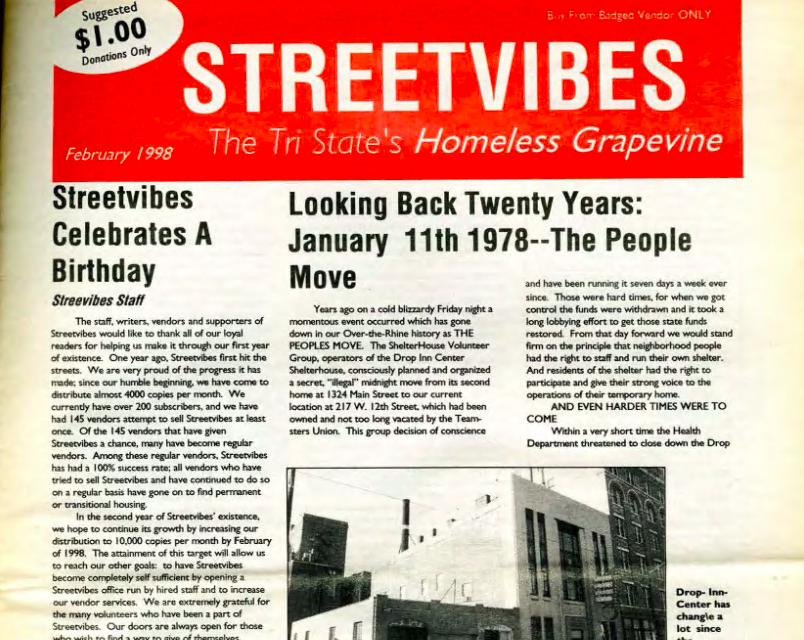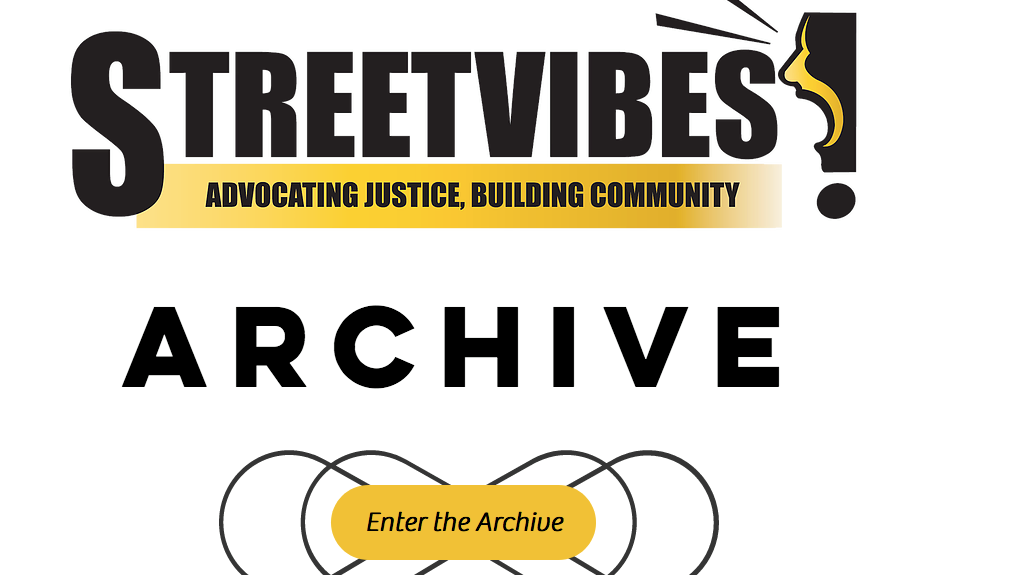Associate Editor Madeleine Wattenberg: The Cincinnati Review is far from the only publication in town, and this week we want to redirect your attention to the work and mission of an important Cincinnati newspaper: published by the Greater Cincinnati Homeless Coalition, Streetvibes is a street paper that was founded in 1997 following the murder of Buddy Gray, an activist and homelessness advocate here in Cincinnati. The paper’s mission is to center the voices of people experiencing homelessness and to advocate for social justice both locally in Cincinnati and beyond. Many of the articles read as though little time has passed—stories about displacement and gentrification of Cincinnati neighborhoods from the early 2000s, for example, are as necessary now as they were twenty years ago. In an article from February 20, 2020 called “Combating Half-Truths: The Power of Recording Our Stories,” editor Gabriela Godinez writes, “With the increasing gentrification of different neighborhoods in Cincinnati, there is a severe under-reporting of first-hand accounts of the people experiencing displacement. . . . We have the power to record and remember our communities as we know them to be true.”
Since its inception, bimonthly issues have included poems and short stories in a feature called “Word on the Street,” alongside news stories and op-eds. Each issue in the archives contains a variety of topics: in an issue published May 1997, poems address food shortages and millionaires, family and religion, and the intersection between domestic abuse and homelessness. Each poem offers a creative and personal approach to subjects in the other articles in the issue.
Fellow University of Cincinnati PhD student Katelyn Lusher has been leading the effort to archive the newspaper, to ensure the stories and histories on its pages can continue to inform community-based activism in the future. She emphasizes that the paper publishes stories you can’t find elsewhere, the kinds of pieces that traditional publications often ignore: “Early Streetvibes issues have an abundance of what I have categorized as ‘homeless narrative,’ or short essays about what it’s like to experience homelessness and how it happened to them. These stories are not the kind you would typically find in any publication, much less a newspaper, so Streetvibes really stands out in that way.”
Katelyn’s comment also implicates our own selection and publication methods. Are we contributing to the silencing and erasure of these experiences or are we creating a space for them? Recently, I talked with other editors about how the aesthetic values we often inherit from the status quo promote a false yet enduring assumption that straightforward political poetry and crafted poetry are incompatible—the pieces in Streetvibes prove exactly why these kinds of poems are both beautiful and necessary.
You can become a subscriber to the newspaper here and check out the full archive here.












